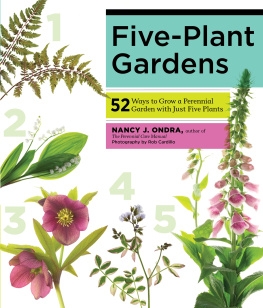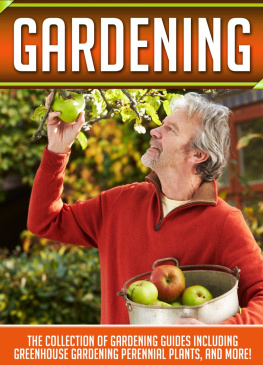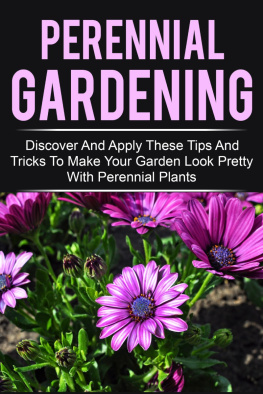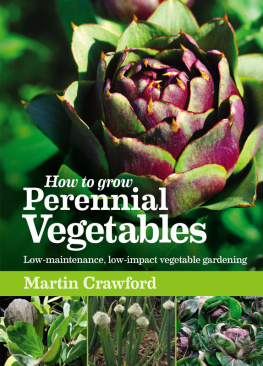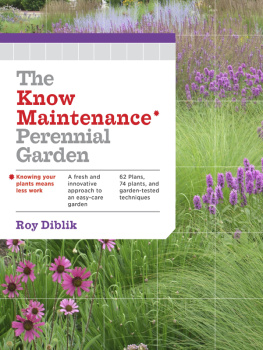Perennial Gardening Made Easy: 37 Amazing Perennial Plants To Plant and Harvest All Year Round
Table of Contents
Conclusion
I want to thank you and congratulate you for downloading the book, Different Perennial Gardening Vegetables .
This book contains proven steps and strategies on how to grow your own perennial garden as well as ideas on what perennial vegetables to plant and enjoy for years to come.
This book aims to help you achieve the garden of your dreams a garden that is teeming with so many nutritious and delicious vegetables, even though you worked on your perennial garden in less the time it takes you to grow plants in a conventional garden.
Thanks again for downloading this book, I hope you enjoy it!
Chapter 1: All about Perennial Gardening
P erennial gardening can be an enjoyable and fulfilling process, especially if you arm yourself with these interesting facts and easy-to-follow tips.
Advantages of Perennial Gardening
1. Perennial gardening enhances and protects your landscape.
Growing perennial plants in your garden lets you enhance the beauty of your landscape, especially if you plant vegetables that also happen to be ornamental. You can also use perennial plants to serve as protection of your garden, whether as slope erosion control, ground covers, or hedges. A number of perennial vegetables also have the ability to fix nitrogen in your garden soil, which means they can supply fertilizers not only to themselves but to other nearby plants as well. Other perennial plants can serve as shade for other plants by climbing trellises, while others can serve as a habitat for pollinators and other beneficial insects.
2. Perennial gardening does not require high maintenance work.
Perennial gardening allows you to grow vegetables without the usual work associated with tilling and planting on a yearly basis. Perennial vegetables and other perennial plants can grow well and produce high yields all through the season. If you carefully plant your perennial vegetables with the correct climate and site in mind, they can flourish even without constant care on your part. And once your perennials are established in your garden, you can rest assured that they can be more resistant to problems like weeds, pests, diseases, or drought.
3. Perennial gardening improves the health of your garden soil.
Since your perennial garden soil will not require tilling, it means the soil food web will not be disrupted and the habitat of many fungi, animals, and other soil life forms will be intact and healthy. If you keep your perennial garden soil properly mulched, you also improve its structure, porosity, organic matter, and water retention ability.
4. Perennial gardening allows you to harvest more vegetables.
Because perennial vegetables are usually available in different seasons, they are able to provide you more food all through the year. Even as your other non-perennial plants are being transplanted or waiting it out under the heat of midsummer, your perennials are well on their way to flourishing or getting ready to be harvested.
Tips to Get Started with Perennial Gardening
Gardening the perennial way is no sweat with these tips:
1. Make sure to prepare your perennial garden soil right in the beginning. It is during this time that you can take out rocks, loosen the soil, and incorporate organic matter.
2. As you plan your perennial garden design, keep in mind how you will be able to reach your perennial vegetables when dividing, staking, or deadheading them. You can turn flat rocks into stepping stones inside your garden. You might also consider creating a pathway behind a border, which you will hide while your plants are growing and then expose when it is time for your spring and autumn garden chores.
3. If you plan on starting your perennial vegetables by seed, it would be best to place the seeds in the nursery bed for a year before planting directly in the garden bed. This way, you can carefully monitor their growth.
4. After transplanting your perennial vegetables in the garden bed, make sure to water them well during the first one to two weeks. Deep watering your perennials will mean that their root balls will be well-saturated, resulting in good contact between their roots and the soil surrounding them.
5. Dont forget to check your perennial plants pH needs as well as your garden soils pH level. This can help you avoid problems associated with unmatched pH some perennials are comfortable with a pH level of 6.5 while others require soil that is more aic or alkaline.
6. Your perennial plants may look stressed during their growth, or get damaged by insects or disease. Make sure to apply an organic fertilizer (quick release) as remedy, such as a mixture of fish emulsion and seaweed.
7. Perennial plants will eventually die, and they do so at different rates. If you notice one of your plants growing poorly, you might transfer it another area in your garden, give it to another gardener, or include it in your compost pile.
Tips to Keeping Your Perennial Garden Healthy and Happy
Ensure your perennial vegetables healthy growth with these tips:
1. Water your perennial garden properly, but this does not mean watering it as much and as often as you can. Your perennial garden plants, when chosen to suit your site and climate, will not require much watering (if at all), especially if you mulch your garden well. During extremely dry summer days, you can try deep watering your plants but avoiding wetting their leaves. Try using a soaker hose system or a deep irrigation system, both of which are useful in a perennial garden.
2. Make sure your perennial garden bed is neatly edged. This will not only give the garden a clearly defined, professional look, but will also help in preventing any weeds and grass from finding their way in. While your plants are growing, you can try re-cutting the edge of your garden bed with sharp edging tools. You might also consider installing a permanent edging to the garden bed at the outset.
3. Do some deadheading. A number of perennial plants tend to drop their spent seed heads and flowers, but others dont drop them for months. Make sure to discard any spent parts from your plants to help keep them looking good as well as encourage them to thrive. Deadheading your perennial plants also helps them avoid wasting energy on producing seeds.
4. Divide your perennial plants every few years to keep them healthy. They can grow too large for their space in the garden, have a bare center after their oldest parts die out, or grow too dense that they are prevented from flourishing. You can shovel out the whole plants and transfer them onto a tarp, carefully placing their root balls on the surface of the tarp. With two forks, tease each plant apart to form several pieces. You might also use a knife to slice the plants into different sections. Make sure to avoid dividing your perennial plants when fully grown or in bloom.
Next page




